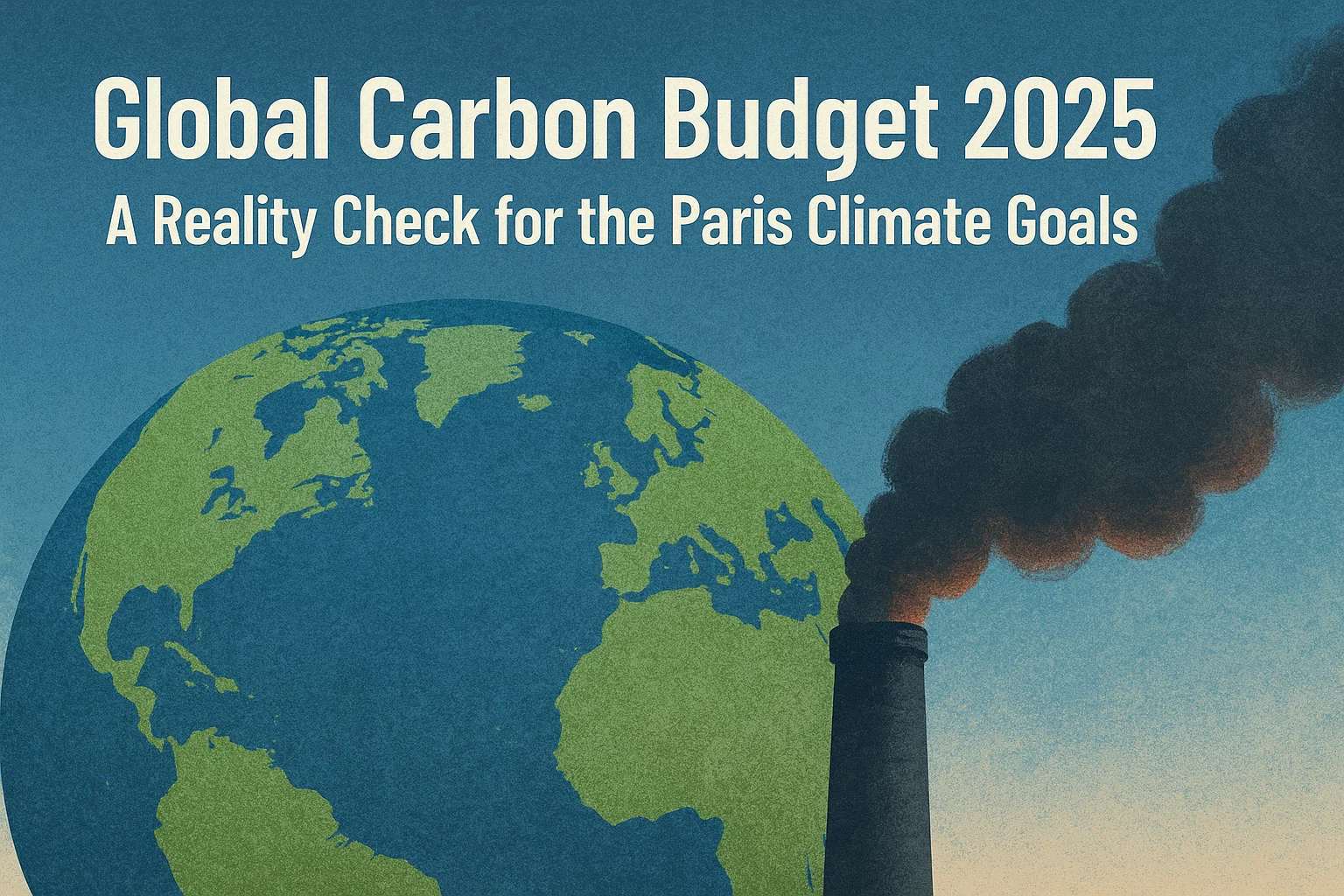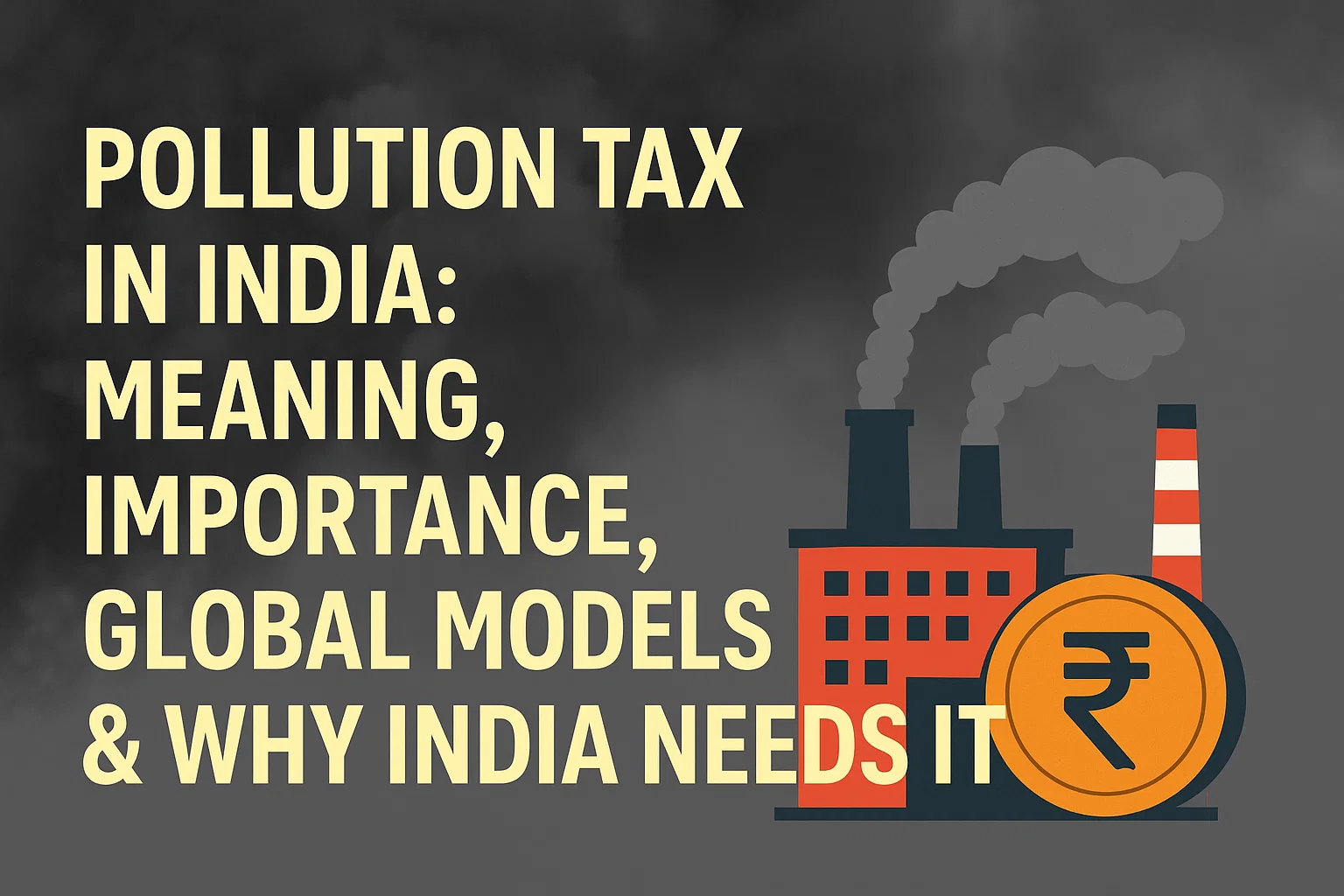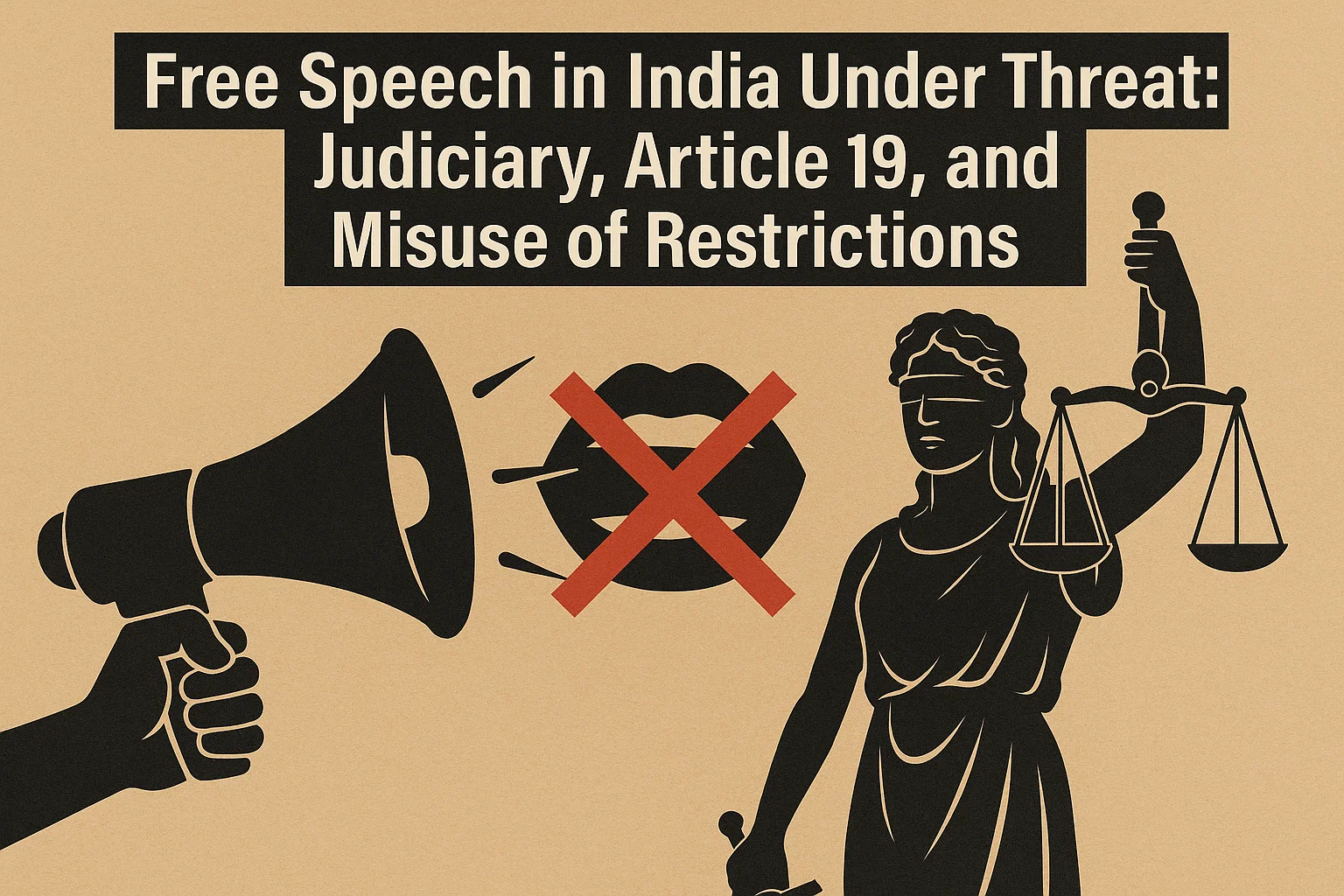Global Carbon Budget 2025: A Reality Check for the Paris Climate Goals
The Global Carbon Budget 2025 warns that global CO₂ emissions are at record highs, putting the Paris Agreement’s 1.5°C target at risk. Learn about emissions trends, India’s role, climate risks, and the urgent mitigation measures needed worldwide.
Global Carbon Budget 2025
The Global Carbon Budget 2025, released in November 2025 at COP30 in Belém, Brazil, delivers a stark warning: global greenhouse gas (GHG) emissions are rising to unprecedented levels, bringing the world dangerously close to breaching the Paris Agreement’s 1.5°C limit. The findings underline the urgency for immediate global mitigation and adaptation measures, especially for the Global South, which remains highly vulnerable despite contributing comparatively little to historical emissions.
What Is the Global Carbon Budget?
The Global Carbon Budget is an annual scientific assessment that examines the flow of carbon dioxide (CO₂) and other greenhouse gases into the atmosphere, land, and oceans. It tracks global GHG emissions and the remaining “carbon budget” available to limit global temperature rise to 1.5°C.
Prepared by leading research networks like Future Earth and the World Climate Research Programme, it serves as a crucial benchmark for policymakers and climate negotiators. By providing transparent, science-backed data, the report indicates whether the world is on track—or falling behind—its climate goals.

Why Is the 2025 Report Significant?
1. Paris Agreement Slipping Out of Reach
Global CO₂ emissions are projected to reach ~38 billion tonnes in 2025, the highest ever recorded. Alarmingly, emissions are now 10% higher than in 2015, the year the Paris Agreement was adopted.
The report estimates only 170 billion tonnes of CO₂ remain in the carbon budget to limit warming to 1.5°C. At the current pace, this budget will be exhausted by 2029–2030, effectively pushing the world past the Paris limits.
2. Rising Climate Risks and Tipping Points
As emissions rise, the frequency and intensity of climate-induced disasters—heatwaves, floods, cyclones, and droughts—are expected to worsen. Scientists warn that approaching tipping points, such as Amazon rainforest dieback and polar ice melt, could trigger irreversible ecological impacts.
3. Equity and the Global South
The report highlights the massive global disparities in emissions and climate vulnerability.
-
India’s emissions in 2025 are approximately 3.2 billion tonnes, rising modestly by 1.4% from 2024—far lower per capita than the US or China.
-
Growth in India’s emissions is slowing due to rapid renewable expansion and an early monsoon that reduced cooling demand.
-
Despite low historical emissions, countries in the Global South and small island developing states face outsized consequences from climate change.
4. Carbon Sinks Under Stress
Natural carbon sinks, which play a key role in absorbing atmospheric CO₂, are weakening:
-
Oceans absorbed ~12 billion tonnes in 2024.
-
Land absorbed ~29 billion tonnes.
However, warming oceans, soil degradation, and ocean stratification are reducing their absorption efficiency, increasing the share of CO₂ that remains in the atmosphere.
What Immediate Actions Are Required?
1. Mitigation Strategies
-
Rapid phase-down of fossil fuels—currently accounting for the majority of global emissions (oil & gas: 55%, coal: 43%)
-
Accelerating renewable deployment—solar, wind, hydro, and nuclear
-
Large-scale investment in carbon capture and storage (CCS)
-
Shifting to low-carbon transport and sustainable urban design
2. Adaptation Measures
-
Climate-resilient infrastructure, such as flood defences and heat-resistant housing
-
Strengthening early warning systems for extreme weather events
-
Promoting drought-resistant agriculture and soil carbon restoration
3. Finance and Governance
-
Operationalising the Loss and Damage Fund (finalised at COP28 and assessed again at COP30)
-
Developed countries must scale up climate finance commitments
-
Tightening national targets through stronger and more transparent Nationally Determined Contributions (NDCs)
4. Equity & Innovation
-
Technology transfer and financial assistance to the Global South
-
Transparent monitoring of emissions and carbon sinks
-
Incentives for industrial decarbonisation and clean energy innovation
Subscribe to our Youtube Channel for more Valuable Content – TheStudyias
Download the App to Subscribe to our Courses – Thestudyias
The Source’s Authority and Ownership of the Article is Claimed By THE STUDY IAS BY MANIKANT SINGH




